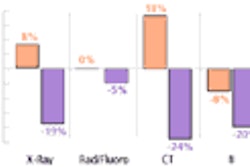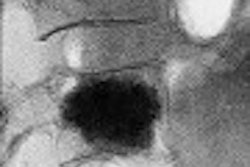CHICAGO - Canadian radiology residents are giving analgesia for conscious sedation without a clear understanding of the nature of the agents, according to the results of a Web-based survey. Dr. Kelly Mayson and colleagues from Vancouver General Hospital and the University of British Columbia polled residents at eight national programs, reporting their findings in a poster at the 2003 RSNA Wednesday.
“The multiple choice questions concerned the pharmacology of common medicines for conscious sedation, their indications and appropriateness of use, and the experience and attitude of residents towards formal training in conscious sedation,” the group wrote.
Some of the procedures during which radiologists administer anesthesia include vertebroplasty, angiography, and TIPS, said Mayson, an anesthesiologist, in an interview with AuntMinnie.com.
A total of 178 surveys were distributed by e-mail between November 2002 and January 2003. The response rate was 51%. The majority of residents (65%) stated that they had not received formal training in conscious sedation, although 68% said they were in favor of such training.
Breaking the drugs down on an individual basis, the residents typically prescribed appropriate doses of lorazepam (54% correct responses) and fentanyl (58.7%). They also correctly identified the duration of action for lorazepam (23.8%), midazolam (6.35%), and diazepam (15.9%).
However, 15% of the residents ordered excessively high doses of midazolam. Residents said they gave 5-10 mg of midazolam as an initial dose, when the correct starting dose is 1-2 mg. An excessive dose of midazolam could cause neurologic or cardiac complications, the authors stated.
Another question asked was: “What is the maximum volume of 2% lidocaine and 0.5% bupivacaine that one can give to a 70 kg patient?” Only 20% of the residents gave the correct answer (5 mg/kg lidocaine with epinephrine), while 45% did not know the correct dosage, and 10% reported administering overdoses. For bupivacaine, only 1% knew the correct dosage (3 mg/kg), while close to 85% didn’t know the answer and 10% administered an unsafe dosage.
“The majority of residents felt the onset of action was more rapid, and the duration was shorter than was actually the case,” the group wrote. “These responses imply that the resident may be more apt to give an additional dose too soon, which increases the risk of adverse events such as respiratory depression, airway obstruction and hypoxia.”
The study did not specifically ask the residents how often they have dealt with an adverse reaction to anesthesia, although many “near misses” most likely go unreported, Mayson said.
“The idea with this study was to obtain a baseline on the residents’ knowledge," she added.
In response to this issue, the university has included a course on anesthesia in its residency core curriculum. Mayson said a follow-up study to determine how useful the course was would be warranted.
Radiologist Dr. Bruce Forster, Mayson’s co-author along with Drs. Mark Ansermino and Pamela Lennox, said that it was becoming more common for the radiology department to work with anesthesiology on-hand or on standby, which is how the radiologists prefer it. Unfortunately, personnel shortages, rather than turf issues, can stand in the way of collaboration on a regular basis, Mayson and Forster agreed.
By Shalmali Pal
AuntMinnie.com contributing writer
Copyright © 2003 AuntMinnie.com



















